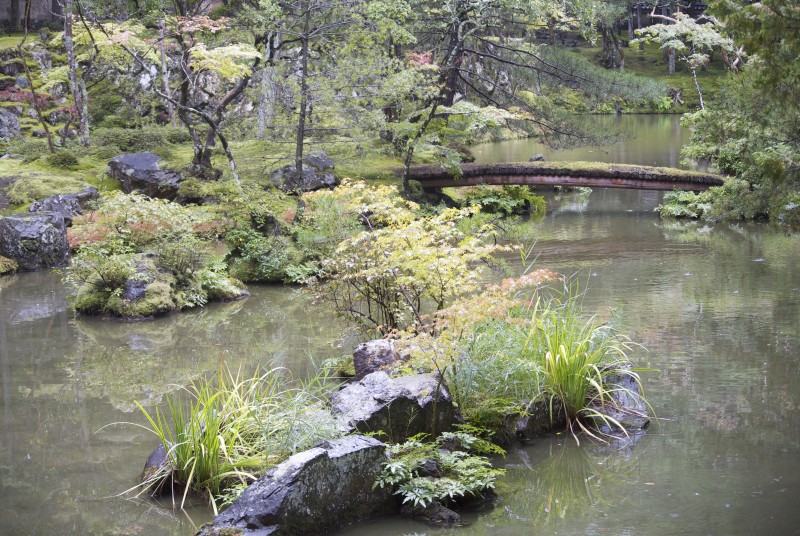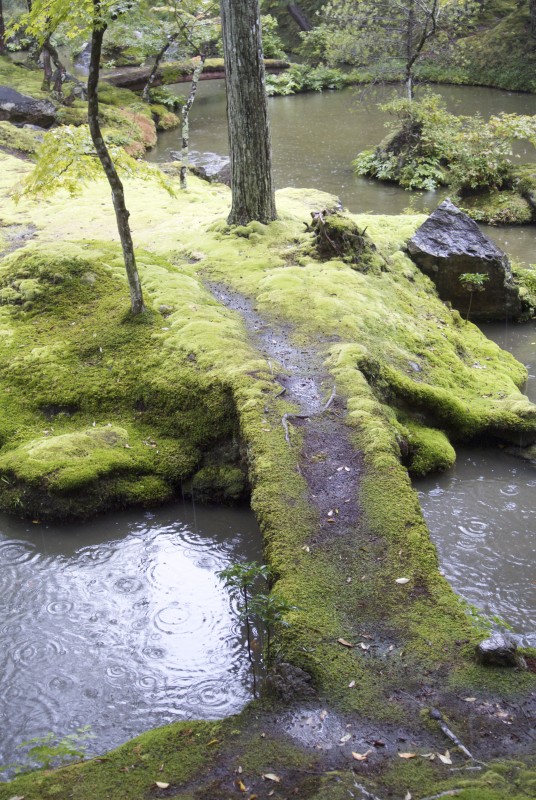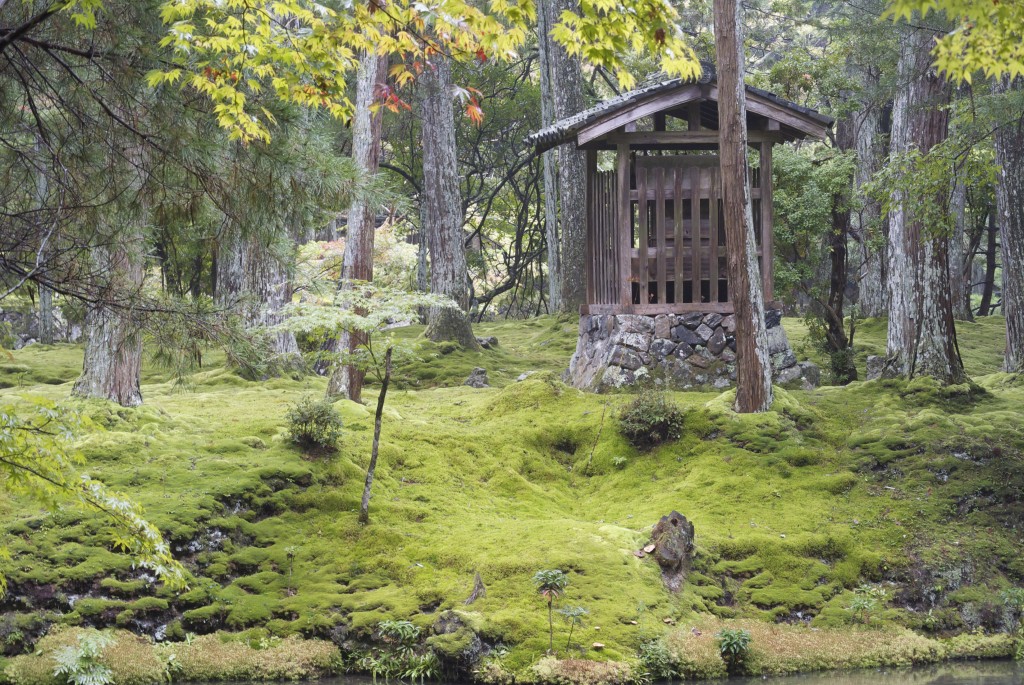
Spanning the divide between the seen and unseen worlds
I happened to come across a short piece today that was a stark reminder of just how intertwined Shinto once was with Zen and other forms of Buddhism. It’s been nearly 150 years since the Meiji-era split between the religions, and we’re used to thinking of them as completely different. We talk of temples and shrines, of buddhas and kami, of foreign and indigenous, constantly reinforcing the division between them. Yet for so much of Japanese history this was far from the case, and in most people’s minds they were inextricably linked and indivisible. For some Japanese they still are.

A path to paradise in the lush moss garden of Saiho-ji
The item that prompted my thoughts concerns the World Heritage Site of Saiho-ji, a Zen temple more popularly known as Kokedera (Moss Temple). The temple was founded in the eighth century by a monk called Gyogi. By the fourteenth century it had fallen into disrepair and abandoned. This was a matter of concern to Fujiwara Chikahide, chief priest of nearby Matsuo Taisha. In 1338 he confined himself in prayer in the inner room of the temple, where he had a revelation that he should invite Muso Soseki, a monk at Rinsen-ji, to preside over Saiho-ji and lead its restoration. (Muso later became the founder of Tenryu-ji.)
Muso consented to the invitation and took up residence in Saiho-ji, and he constructed a garden based on two levels: a lower pond garden with path to stroll around, and an upper area with a dry landscape and place for meditation. Muso’s lower garden was apparently spread with sand; only in the nineteenth century, after flooding, did the moss grow for which the garden is now famous.
The collaboration of Fujiwara Chikahide and Muso Soseki shows just how tight were the ties of Shinto and Zen in those days. For us post-Meiji folk, it seems odd for two men of ‘different faiths’ to collaborate in such manner. But no doubt for the two men involved nothing could have been more natural, since the idea of ‘separate religions’ would have seemed quite absurd to them. [John Nelson, professor of Japanese Religion at San Francisco University, suggests that it might be equivalent to music, where what we would term as just music today might be divided tomorrow into quite distinct genres with their own peculiarities. Or to extend the analogy, perhaps it’s like thinking Country and Western is a genre, and then having the two parts split apart and the differences between them emphasised and enforced.]

Shinto shrine in the grounds of the Zen temple of Saiho-ji

A Zen rock garden – at Matsuo Taisha! (Created by famed designer, Shigemori Mirei)

A very timely post John. This is exactly the issue I have been grappling with for my book on the elements in Japan. Japan was a very different place in pre-Meiji times, including as you say the close ties then between Buddhism and Shinto (or the Buddhas and Gods). My visit to Omiwa Shrine to climb Mt Miwa yesterday bought home the impacts of the separation. After returning to Kyoto I found an article by Klaus Antoni that said prior to the shinbutsu bunri rei there were three syncretic jinguji at the base of Mt Miwa. One of them, Byodi-ji, covered an area 500 m x 330 m in extent. According to the article nothing remains of the structures today. Such a massive change in a short period, repeated across the country from what I understand. From my perspective I am trying to piece together a picture of the culture of Japan that existed for over 1000 years in the pre-Meiji era, and where the elements fit into that picture. I will cover the post-Meiji era of course. It is essential though to have some appreciation of how Japan has evolved and changed over time and the impact on current sensibilities. I’ll be very interested to hear what Professor Nelson has to say when you speak to him. Thanks for the thought-provoking post! It struck a chord as you can see. :-)
Ha, talk about striking a chord. As you can see at the end of my article, where I’ve updated the John Nelson reference, he compares the difference to a case where people are used to thinking of music as just music, then someone comes along and classifies it into two different sorts (classical and everything else). Then everybody starts thinking that way and presumes there’s something special about classical because it’s more ancient, or indigenous….
To add to further my comment. :-) One of the other major changes in the post-Meiji era as far as I can tell was the change from the luni-solar to the Gregorian calendar. Along with this significant shift was the banning of traditional practices such as Onmyodo and Shugendo that were not considered to have a place in the new order. Hence my observation above that Japan was a very different place in pre-Meiji times. The separation of the Buddhas and Gods was one of many radical changes in this transformative period. If only a time machine was available! This is a new area of research for me, so if any of my comments are off the mark please let me know.
No, I think your remarks are very much on the mark, Jann. You’re quite right to emphasise the very real difference between pre- and post-Meiji. Many people assume the post-Meiji set-up is the way things have always been. Far from it. Rather than a Restoration, it was a Revolution. Where Buddhism had been on top, now the new state-sponsored ‘Shinto’ was on top. Where people had acted at the behest of the shogun, now they did so in the name of the emperor. I find the banning of Shugendo as primitive particularly outrageous, since it seems to embody all that is good and wholesome about Japanese religion. Unfortunately because it was marginalised, it is not as visible as orthodox Shinto, but I think it has even greater potential in spreading to the West because of its lack of emperor-centredness and because of its full-blown nature immersion.